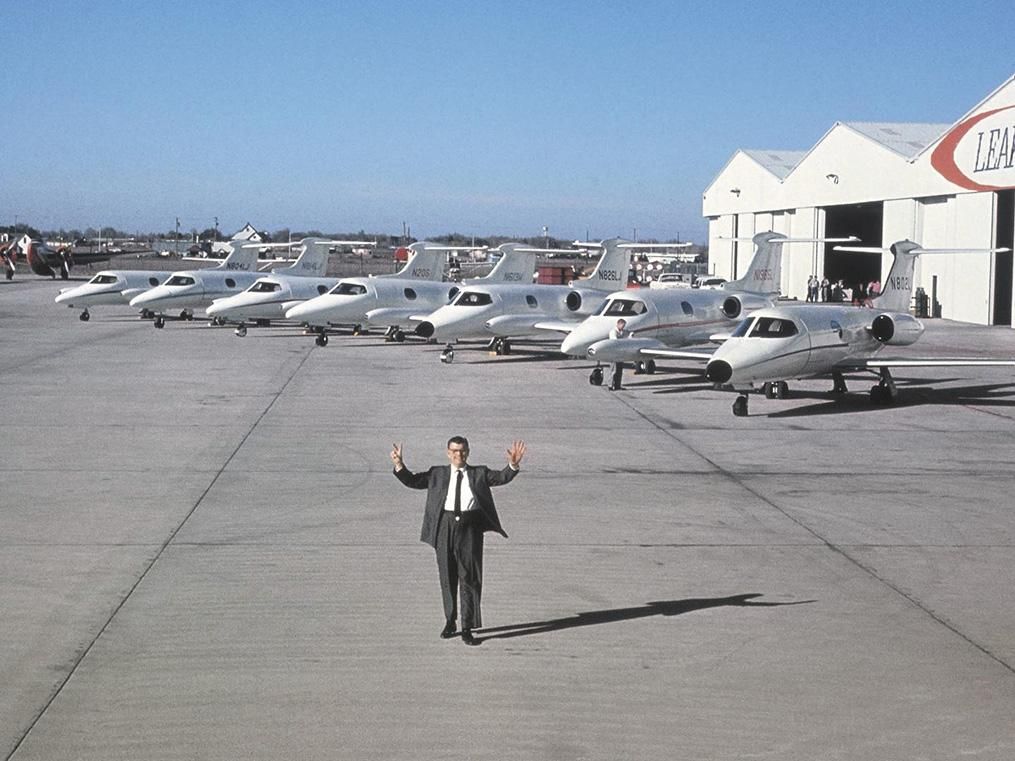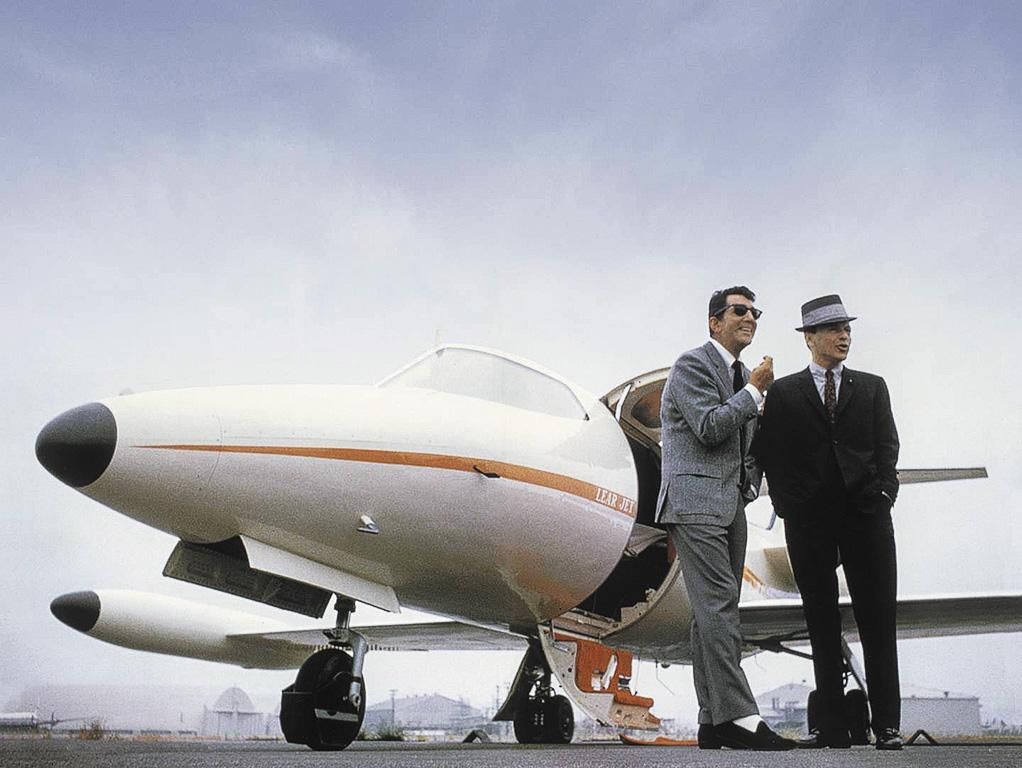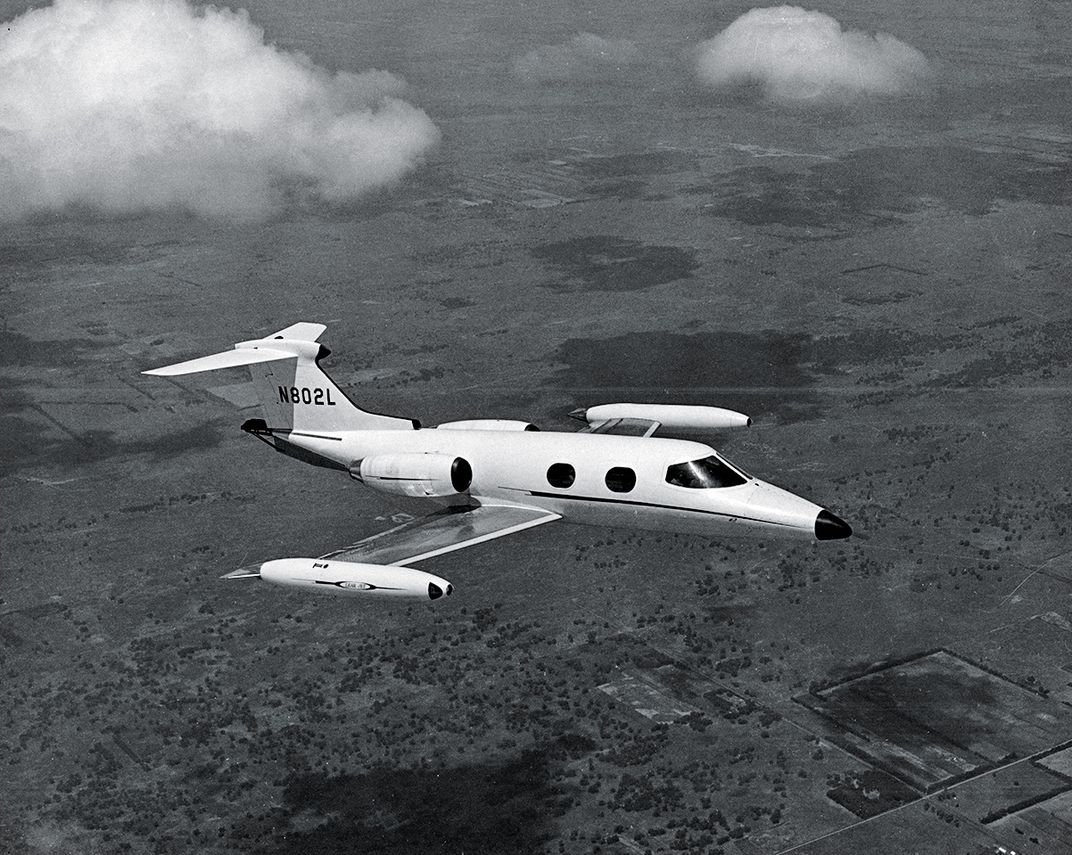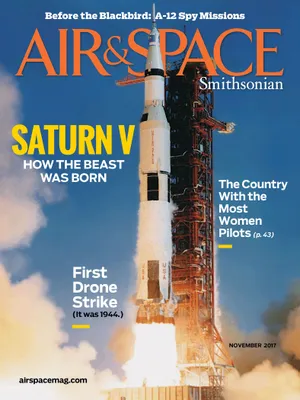Birth of the Bizjet
Bill Lear created a jet for the Jet Set.
:focal(699x583:700x584)/https://tf-cmsv2-smithsonianmag-media.s3.amazonaws.com/filer/d6/ba/d6ba941c-87ec-48f1-967c-ecd166de6ec8/16f_on2017_static_2004-11706h_live.jpg)
When Frank Sinatra decided to drop a cool half-million on an airplane to shuttle his Rat Pack pals between Los Angeles and Las Vegas, he chose a Lear Jet. For Bill Lear’s company, 1965 was a very good year.
Lear was 61 when he decided to get into the aircraft production business. Although he’d never designed an airplane, the self-trained engineer was known for his inventions, including the first jet autopilot, for which he’d received the 1949 Collier Trophy.
In the late 1950s, Lear and his family were living in Switzerland, where he hoped to expand his avionics business. He had watched Boeing’s 707 eclipse propeller-driven airliners and had an idea: Why not develop a jet to replace prop-driven corporate aircraft, like the Beech Model 18 or the older Stinsons and Fairchilds? Through his son, Bill Jr., a test pilot, Lear learned of the Swiss AFA P-16 fighter-bomber, and persuaded the aircraft’s designer, Hans Studer, to join his team. While the P-16 never made it into production, some of its wind tunnel data would eventually be used in designing the Lear Jet 23.
After the board of directors of Lear, Inc. refused to finance Lear’s idea for a business aircraft, he sold his shares in the company and poured $12 million of his own money into developing the aircraft. He moved the project to Wichita, Kansas, and in 1962 established the Lear Jet Corporation.
Lear was adamant about keeping the jet under 12,500 pounds; once, while hefting an aircraft part in his hand, he told one of his engineers, “I’d sell my grandmother for a one-pound reduction!” According to the New York Times, the engineer modified the part, then reported that he “had been able to lop off three and a half grandmothers without sacrificing strength.” (After that, the engineers on the shop floor substituted “grandmothers” for “pounds.”)
Getting from first flight to type certification took a mere nine months. At the type certificate ceremony in 1964, Najeeb Halaby, administrator of the Federal Aviation Agency, as it was known then, hopped into the pilot’s seat and flew the aircraft for an hour. “I’ve had an itch to fly your jet since I first saw its photos,” Halaby said. “Boy, what a hot rod! My congratulations and compliments.” (The two men didn’t always get along, writes Lear biographer Victor Boesen. When Lear telephoned Halaby in Washington, D.C., from Kansas, complaining that the type certification process was taking too long, Halaby replied, “Why don’t you hang up and save money? You’re screaming so loud I can hear you without the phone.”)
Once on the market, the Lear 23 was the fastest, smallest, and cheapest business jet, and could out-climb an F-100 to 10,000 feet. In a flourish of hyperbole, it was promoted as “the fighting businessman’s jet.” But the -23 achieved its rocket-like performance by sacrificing headroom; once aboard, passengers had to remain seated; the cabin was too small for them to stand. Lear responded to complaints by saying, “You can’t stand up in a Cadillac, either. An average sized man sitting in my jet has twenty-eight inches of headroom. Anybody with more than a twenty-eight-inch head should buy some other kind of airplane.”
Lear was a genius at marketing. He told his sales manager, Clay Lacy, to take celebrities flying. The aircraft’s popularity took off after Sinatra purchased a -24.
“Sinatra introduced a lot of other people to the Lear Jet as well,” says National Air and Space Museum curator Dorothy Cochrane. “He loaned the jet to Elvis Presley when he eloped with Priscilla.” Sammy Davis Jr. and Marlon Brando borrowed the jet to fly to Mississippi, where they joined Martin Luther King Jr. on a freedom march. When Sinatra proposed to Mia Farrow, he hid her engagement ring under a piece of cake served aboard the Lear.
“And there were the rock and roll people,” says Cochrane. “Roger McGuinn of the Byrds was a friend of Bill Lear Jr.; the song ‘Eight Miles High’ is, in part, about flying in a Lear Jet.”
A Lear was featured in Carly Simon’s 1972 hit, “You’re So Vain,” about a wealthy, self-absorbed lover, “and James Bond parachuted out of one,” says Cochrane. “So it has this really great ’60s vibe.”
The Lear Jets would set many records, including a time-to-climb record in 1965 for reaching 40,000 feet in seven minutes, 21 seconds, with seven persons aboard. And in May 1966 it became the first business jet to circle the globe, completing the 23,000-mile course in 50 hours, 20 minutes.
**********
The Museum’s Lear Jet 23 is the second produced. “Basically, Lear skipped the prototype stage,” says Cochrane. The first Model 23 flew 194 hours during 167 flights; it was destroyed in a crash during a test flight in June 1964.
In 1967, the Gates Learjet Corporation offered the aircraft to the Museum. “The first example of this type had been lost when the wing spoilers jammed during takeoff,” says an internal Museum memo. “No 2 is the surviving example of this original form which [the company] described as ‘the first designed from the ground up as a business type, corporate transportation vehicle.’ ”
Before the Accessions Committee could consider the gift, however, NASA requested use of the jet for extensive wind tunnel research at its Ames Research Center in California. Eight years later the company reached out to the Museum again: “The purpose of this letter is to advise that after all these years Learjet N802L is now available.”
The aircraft was donated on October 11, 1977, and is currently on display at the Steven F. Udvar-Hazy Center in northern Virginia. In 1990, Learjet was acquired by Bombardier; 54 years after the sleek little jet’s first flight, it remains a staple of business aviation.



